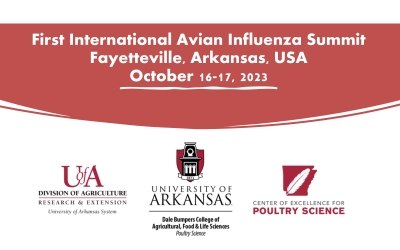Experiences in Peru for surveillance in the fight against highly pathogenic H5N1 avian influenza
Authors: Maria E. I. D’Arrigo
GMPC TOP
2023.
vol. 3, Iss. 1
pp:0-11
Doi: https://doi.org/10.51585/gtop.2023.1.0014

Abstract:
The emergence of highly pathogenic H5N1 avian influenza poses a significant threat to human and animal health worldwide. This summary provides an overview of the surveillance efforts implemented in Peru to combat the spread of H5N1 avian influenza. Joint efforts between the authority, the productive sector, and academia date back to the first influenza outbreak in Chile in 2002. Since then, the government has been developing intense clinical and serological surveillance in the domestic birds and poultry industry. In parallel, the university has been carrying out important research to identify and typify the viruses that circulate in the resident and migratory wild bird populations of the Peruvian coast, having detected and identified during these years around 50 strains of influenza viruses of 10 different hemagglutinin subtypes and 8 neuraminidases, a single strain of the low pathogenicity H7N3 subtype. Until then, an H5-type virus had never been detected in wild birds. With the arrival of the virus in North America, a comprehensive response was developed in which the key components of the surveillance program included active and passive clinical surveillance in wild bird populations, commercial poultry, and backyard and game bird populations. Regarding surveillance of wild birds, the authority has received 238 notifications, of which 64 were confirmed positive, from 15 regions. In the Avian Pathology Laboratory of the UNMSM, actions were carried out to support the active surveillance of wild birds of the Peruvian coast in the impact zones for poultry farming, analyzing 405 samples of fresh feces from 41 species of asymptomatic coastal aquatic wild birds, being positive 12 (2.96\%). Additionally, 45 samples of wild birds with suspicious symptoms were analyzed and sent by different government institutions (SENASA, SERFOR, SERNAMP), with 19 (42\%) being confirmed positive. Regarding domestic bird populations, 1,676 notifications have been made to SENASA, of which 194 were positive for the H5N1 virus in 13 country regions. On the other hand, the Avian Pathology Lab received 16 confirmed positive cases by PCR and viral isolation in SPF embryonated eggs from ducks, quails, layers, native birds, and one case of turkeys. The complete genome analysis of 09 strains of wild birds, 04 of domestic birds, and one of sea lions has been carried out. Analysis of new samples is in process. NGS analysis has identified the IA H5N1 clade 2.3.4.4b virus; however, it has been found that the Peruvian strains are lining up in a group together with the Chilean strains. All these activities are possible to carry out thanks to the financial support of national and international institutions: NAMRU, Concytec-World Bank, Peruvian Poultry Association, and ALA-US Poultry. The high vulnerability of poultry populations in the country is due to its location along the coast, where tens of thousands of dead wild birds have fallen, in addition to being surrounded by a very high population of ducks, fighting, and backyard birds. The government determined emergency vaccination, as well as the continuation of clinical and virological surveillance in vaccinated and unvaccinated poultry populations. SENASA has been evaluating the protection of approved vaccines, both by the serological response with hemagglutination inhibition tests using local antigens and by challenge. The industry has responded by significantly increasing the levels of structural and operational biosafety, as well as directly supporting control actions at the regional level. Since March, no outbreaks have been reported in industrially farmed birds.
Keywords:
HPAI, H7N3, PCR, NGS, NAMRU, SENASA, Peru, Surveillance
Statistics:
Article Views: 980
PDF Download: 5